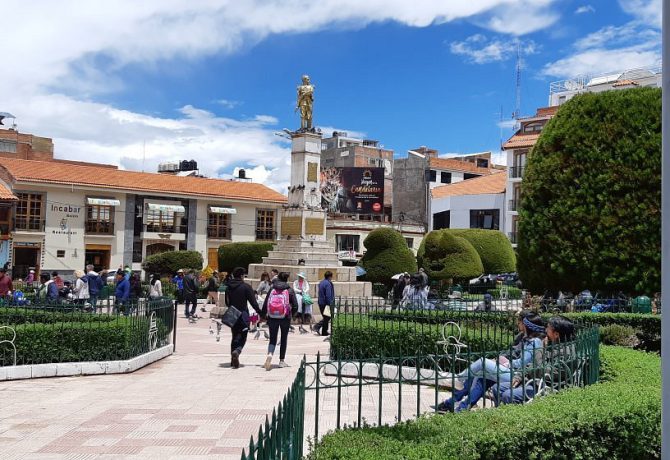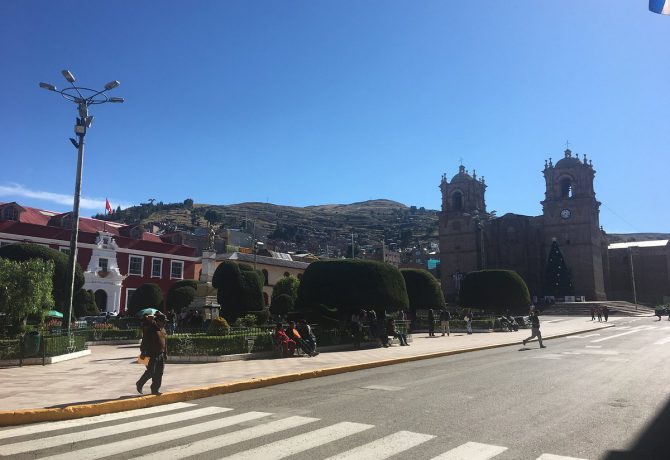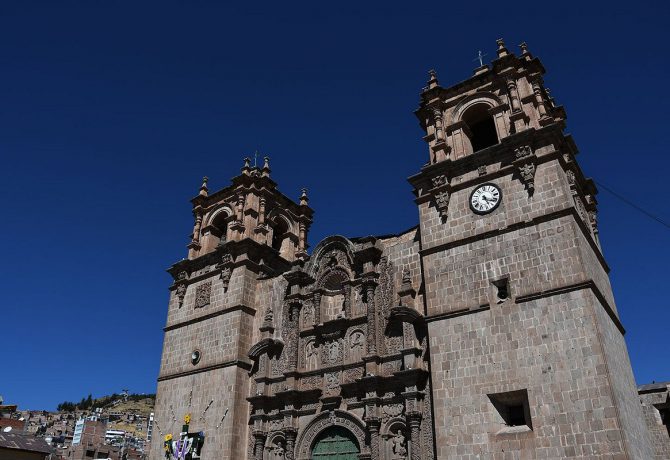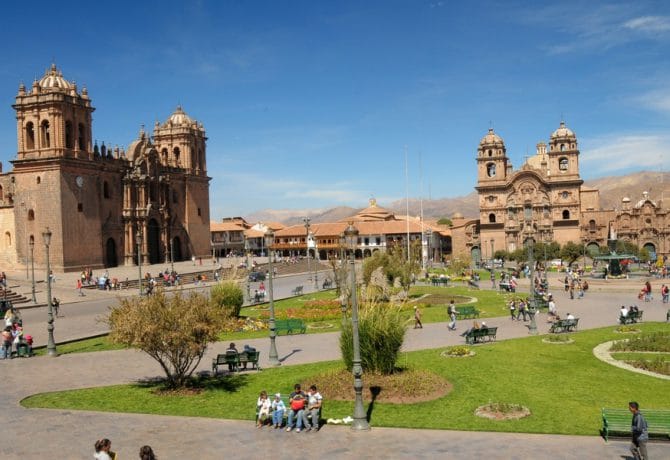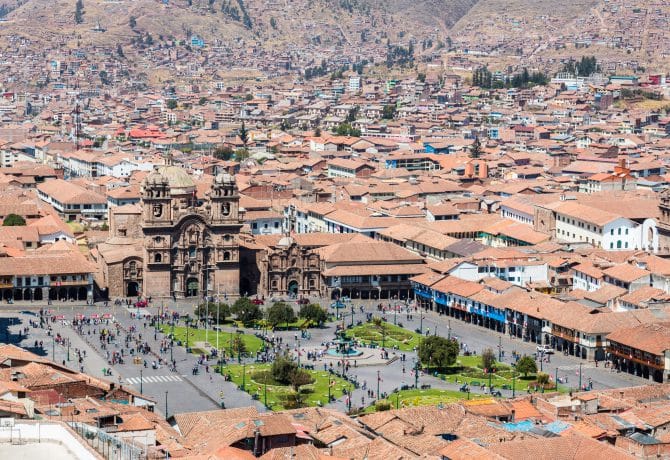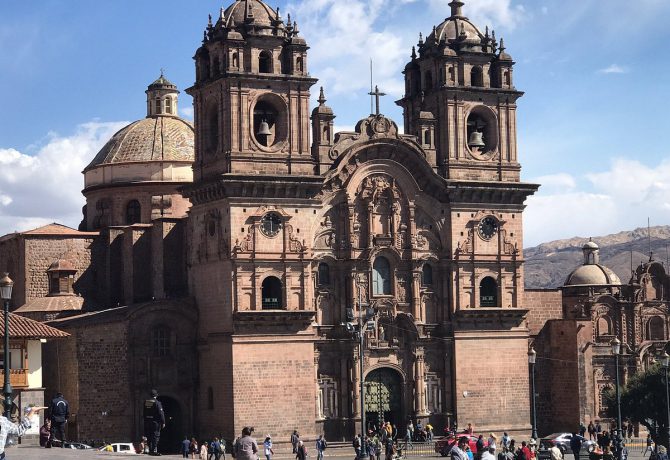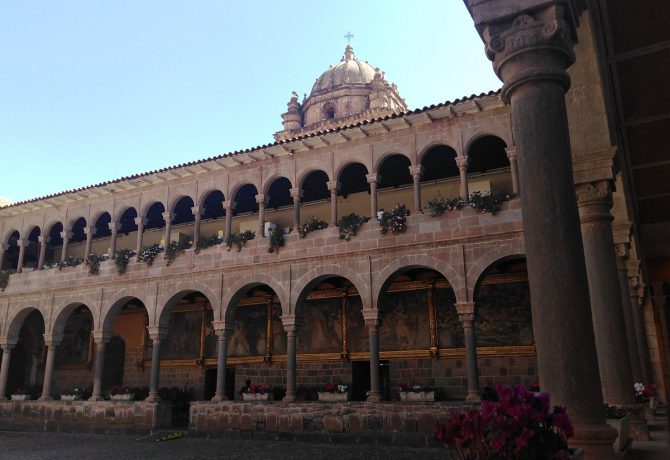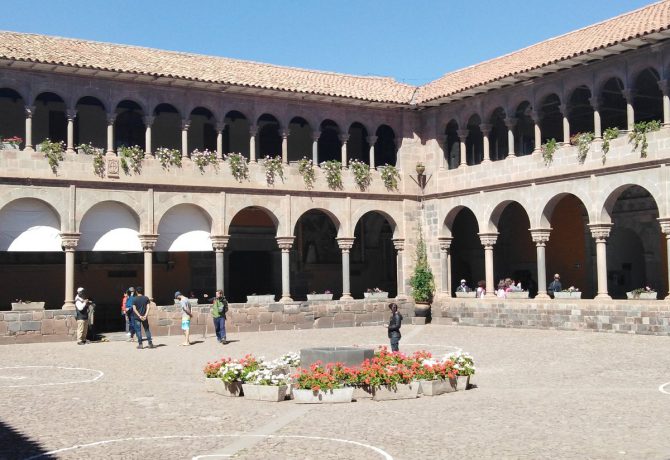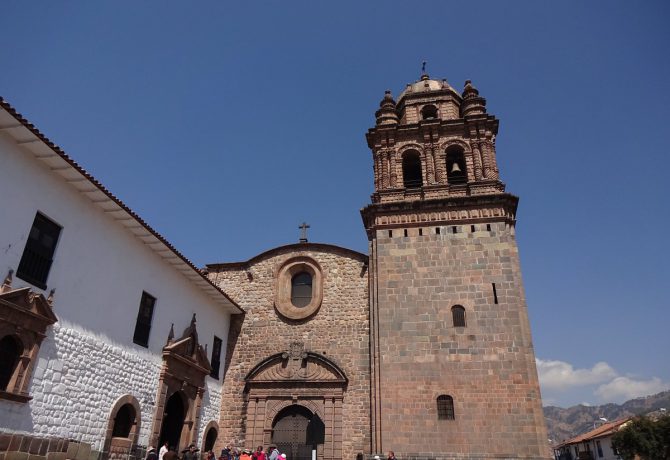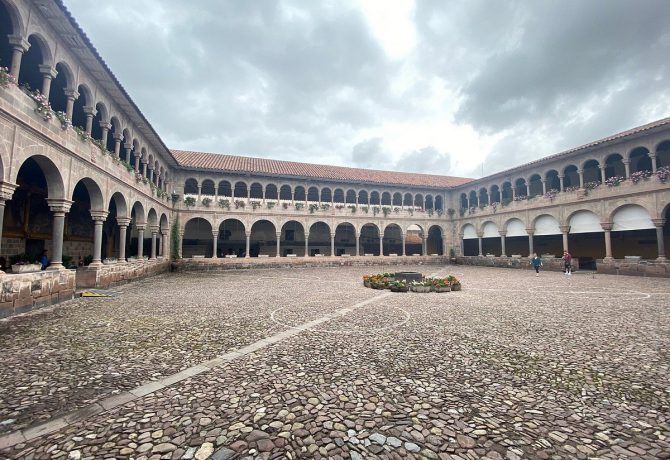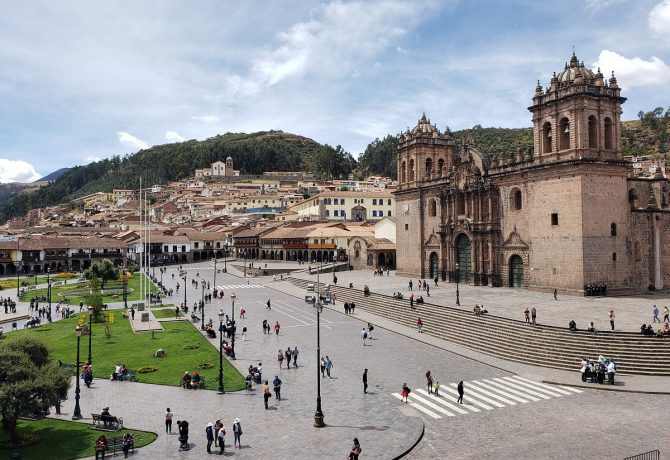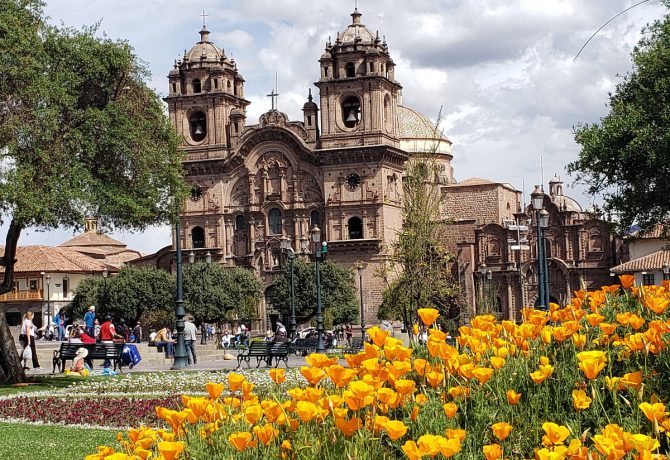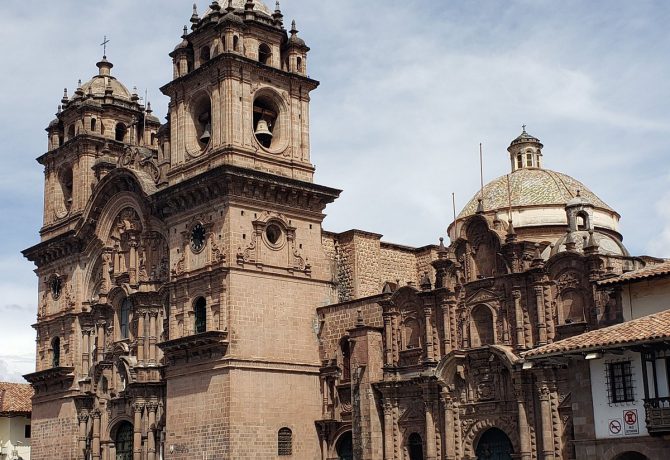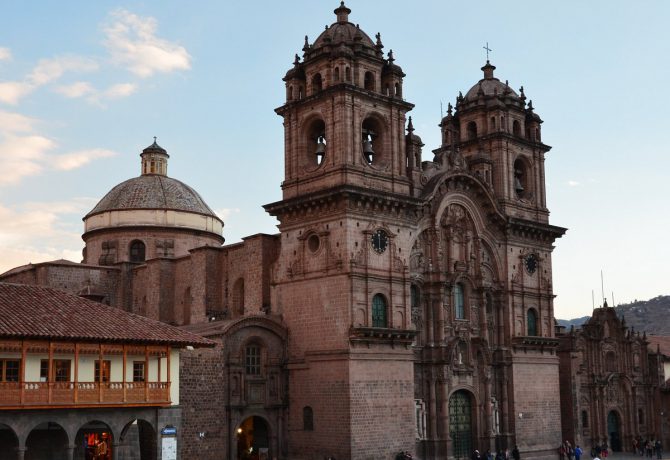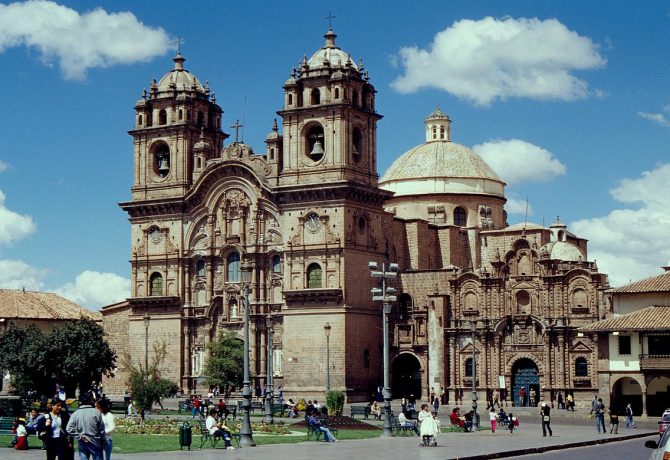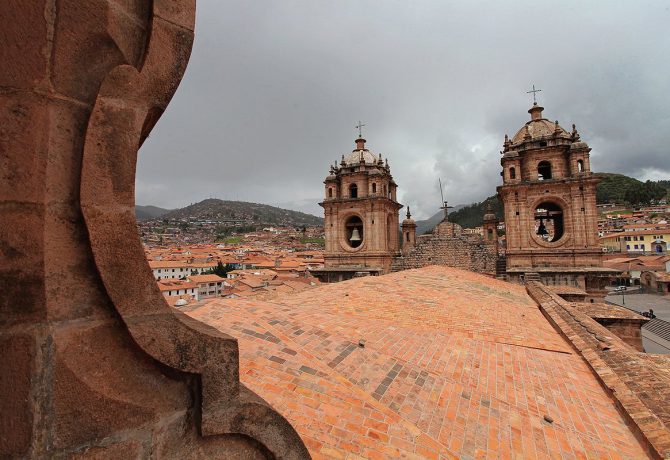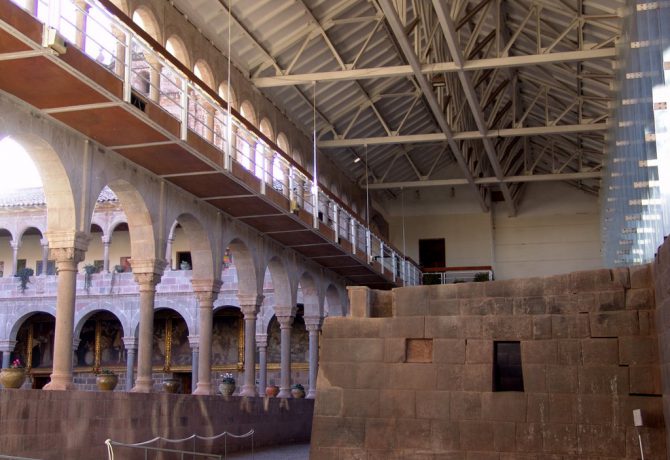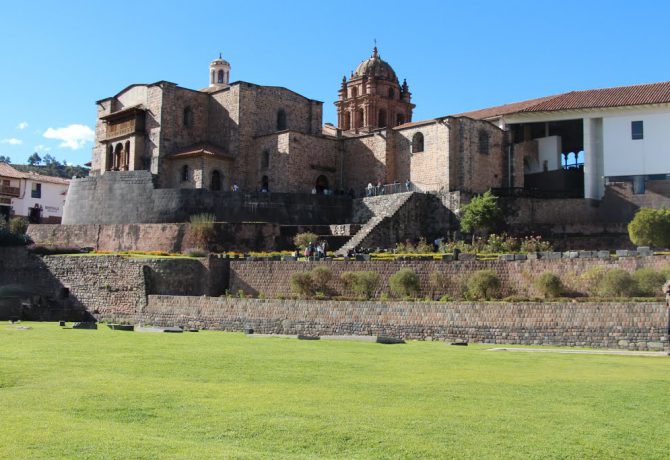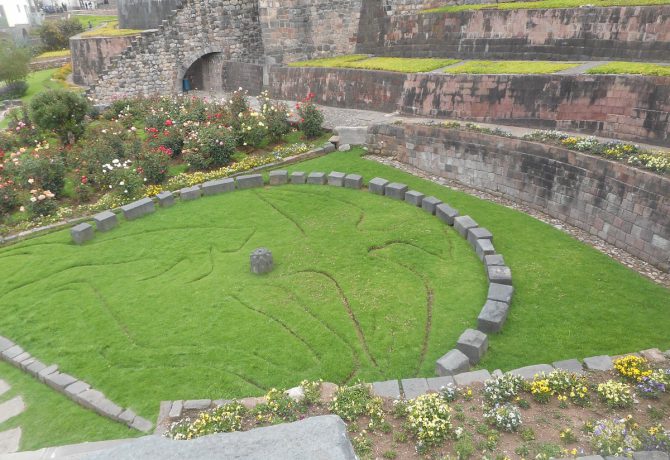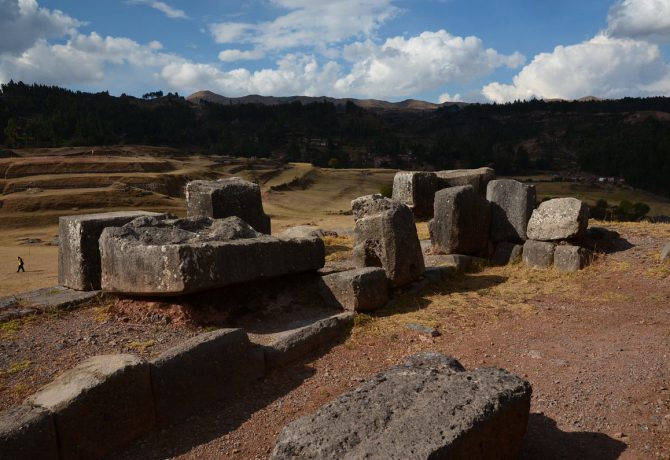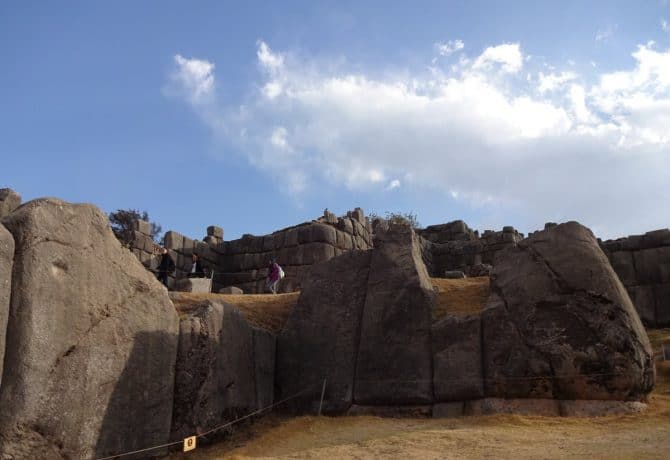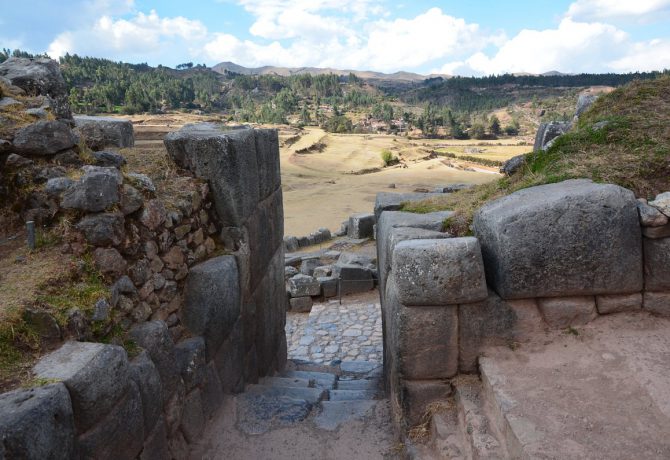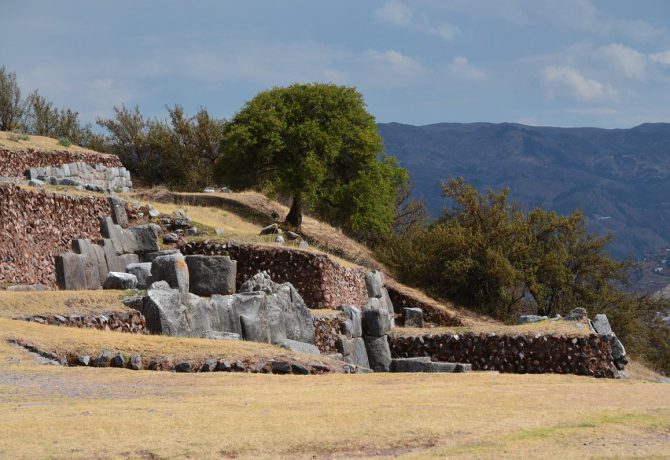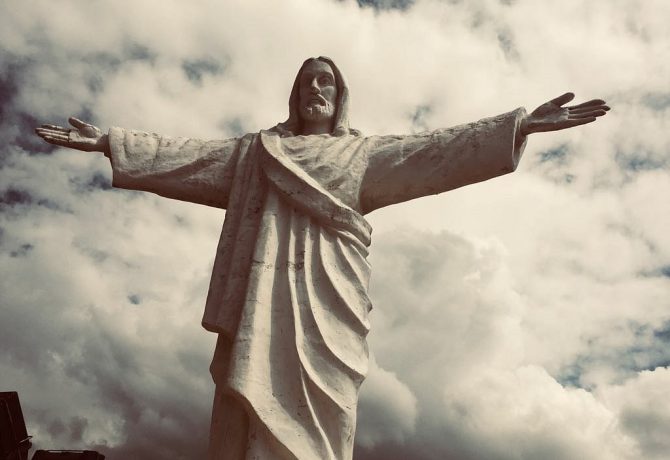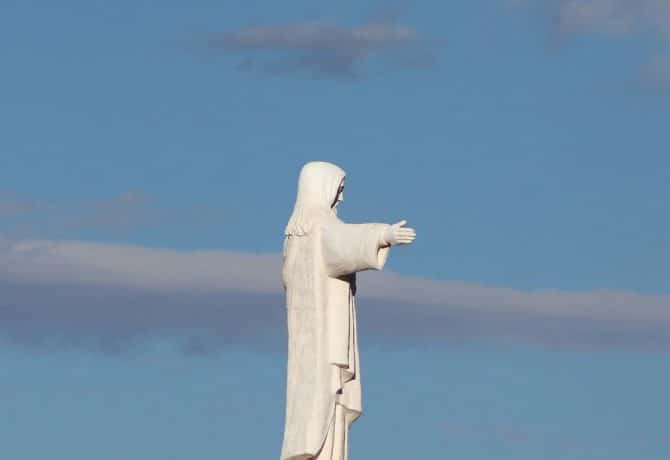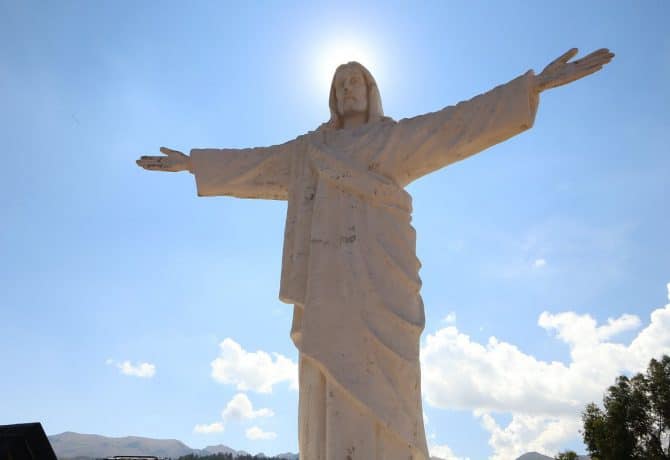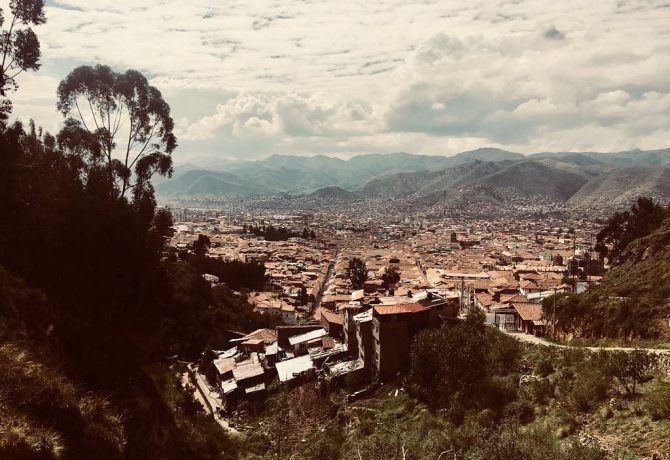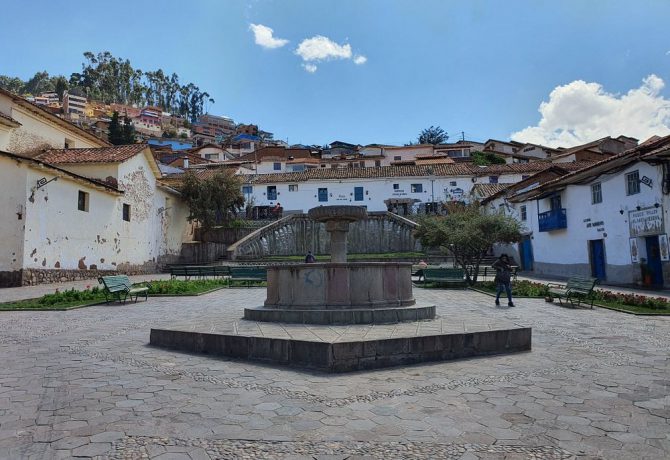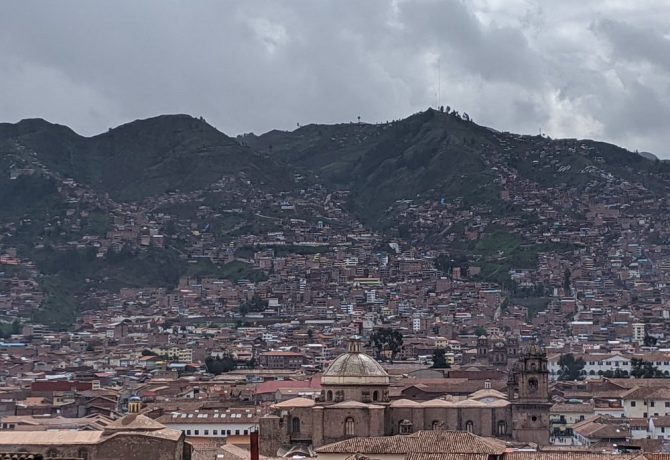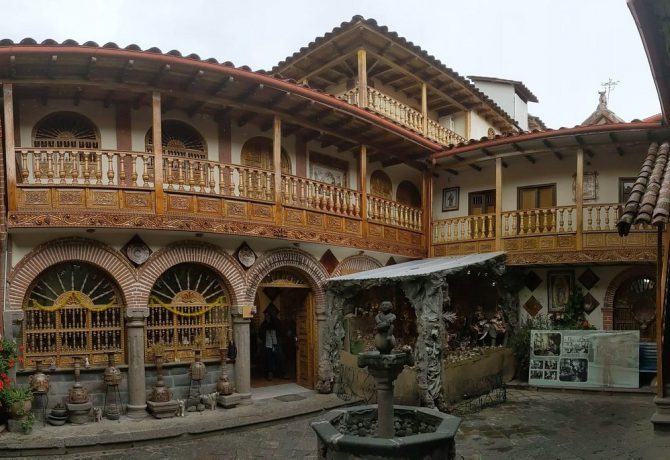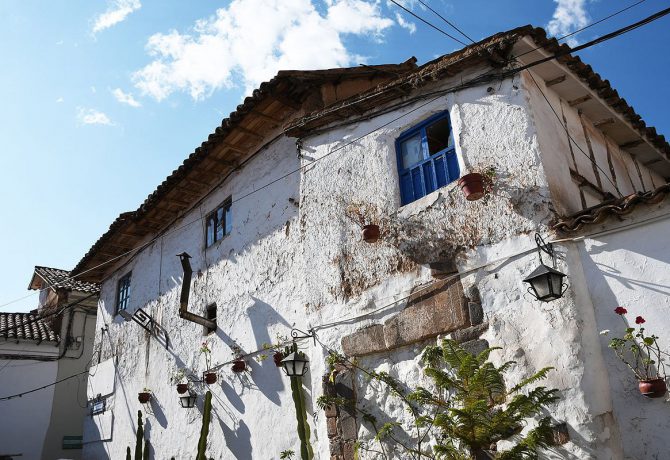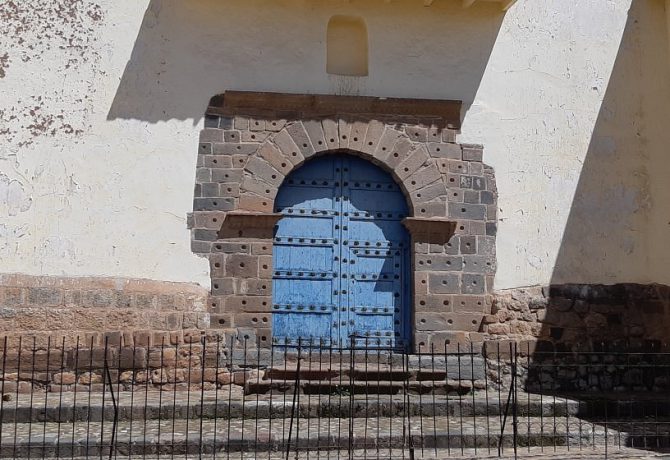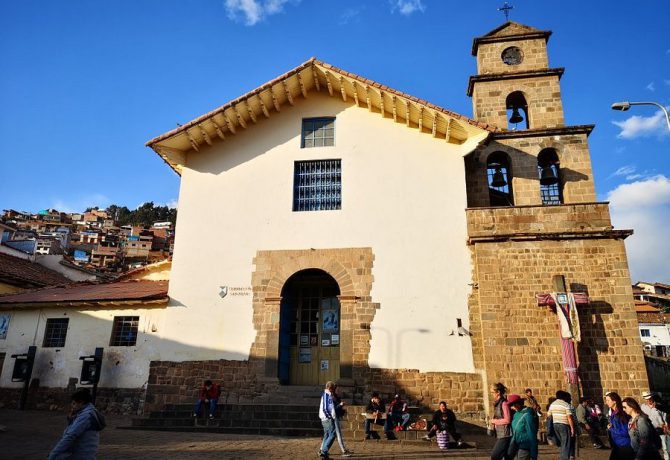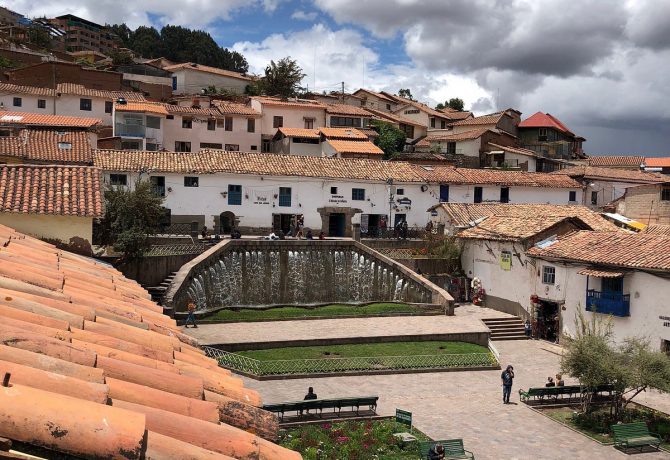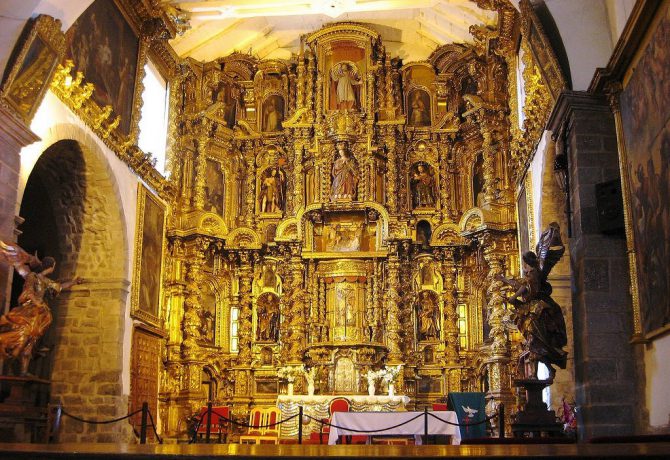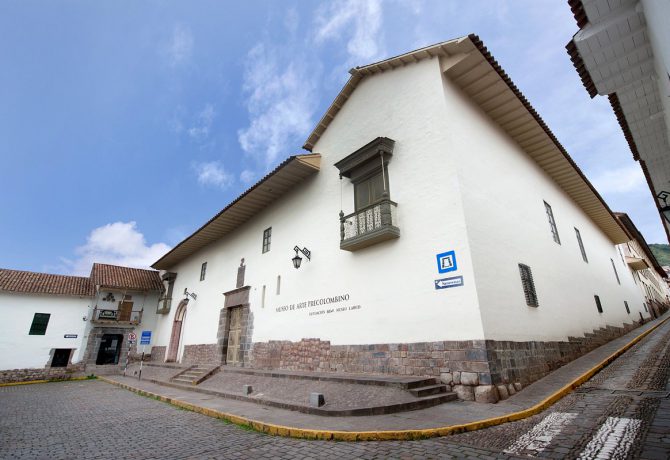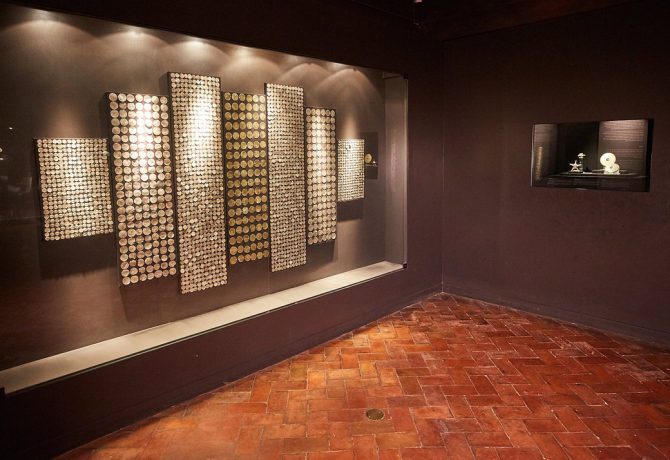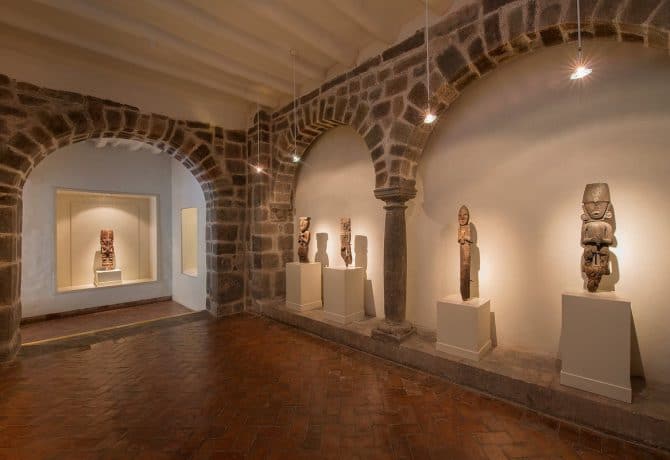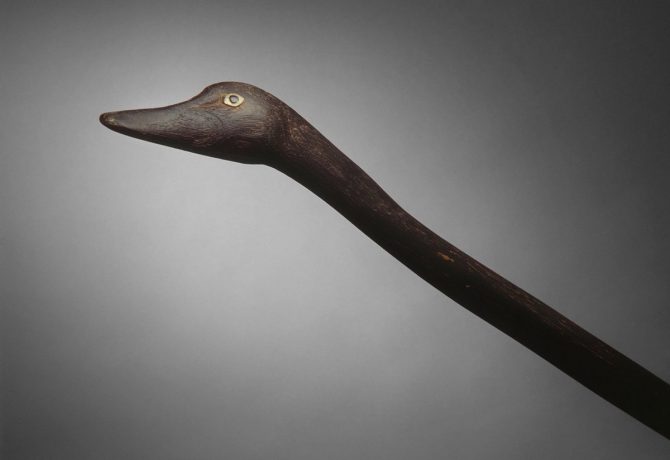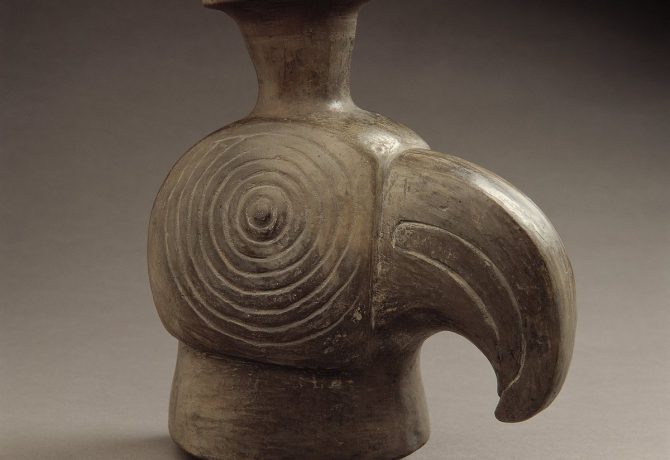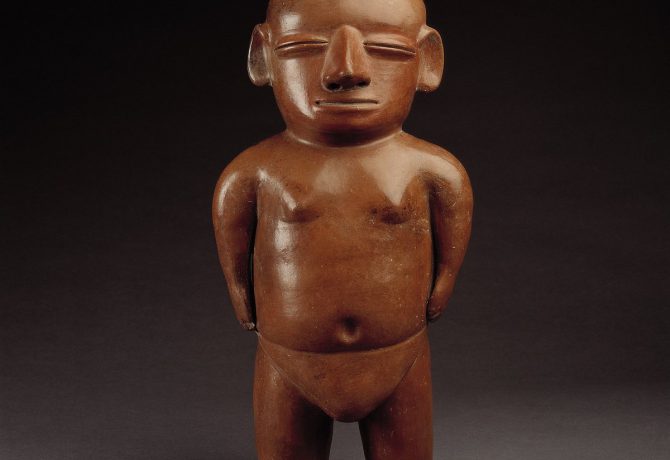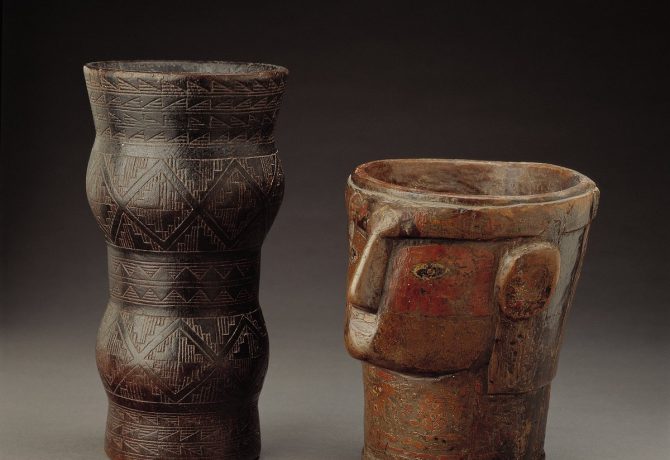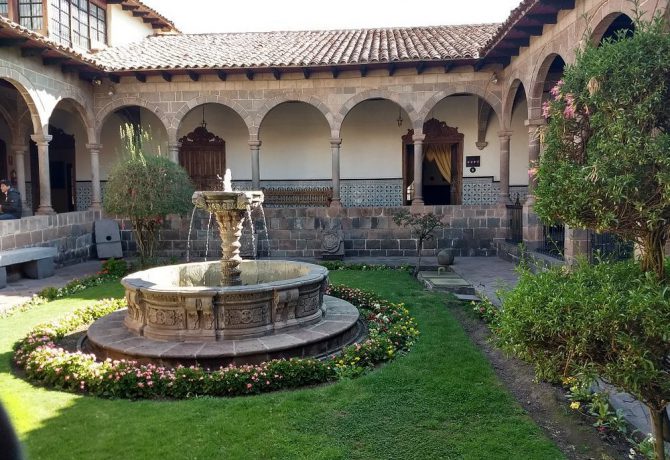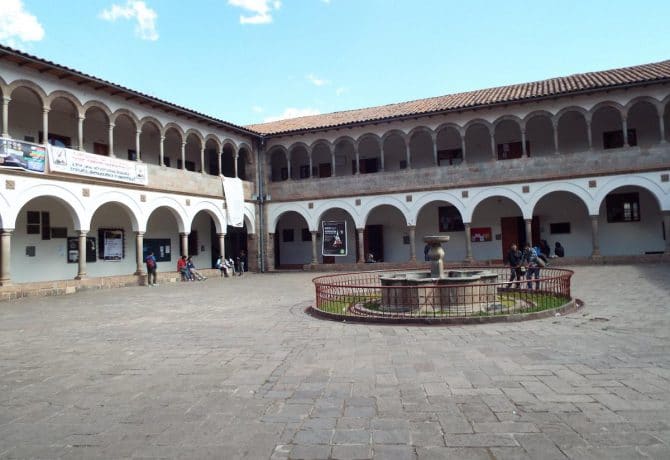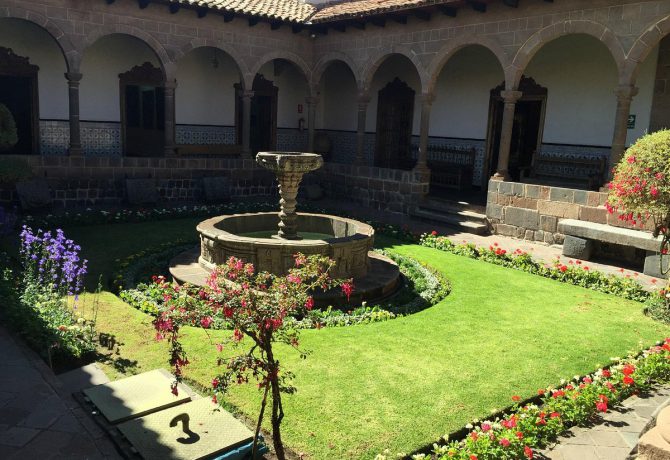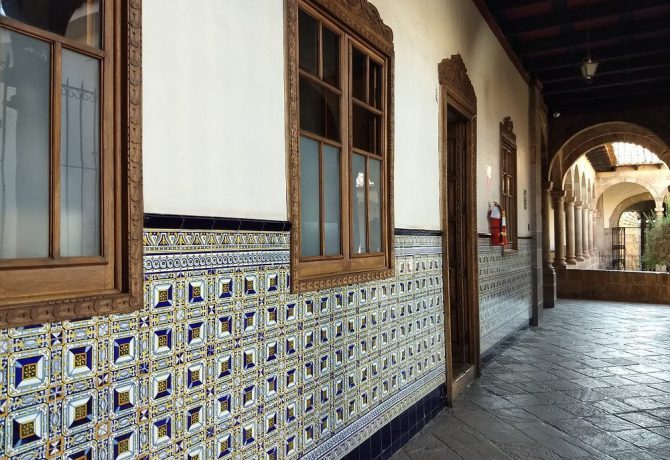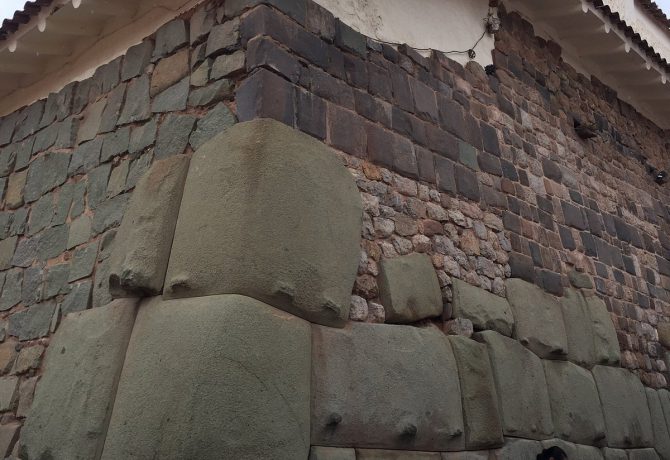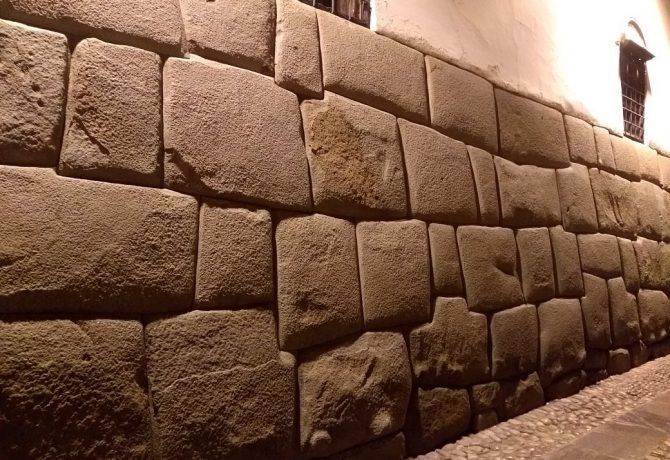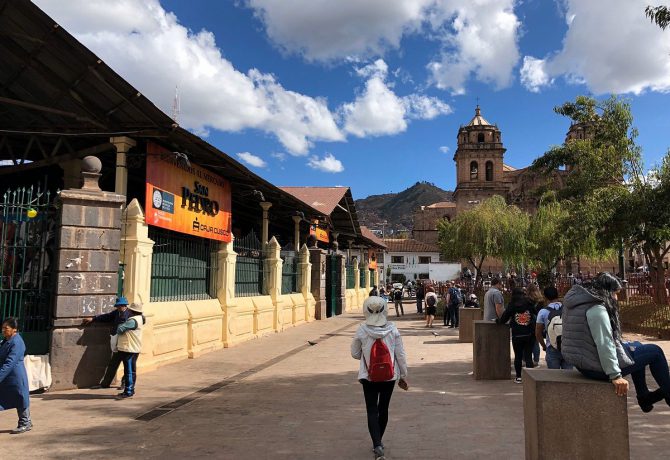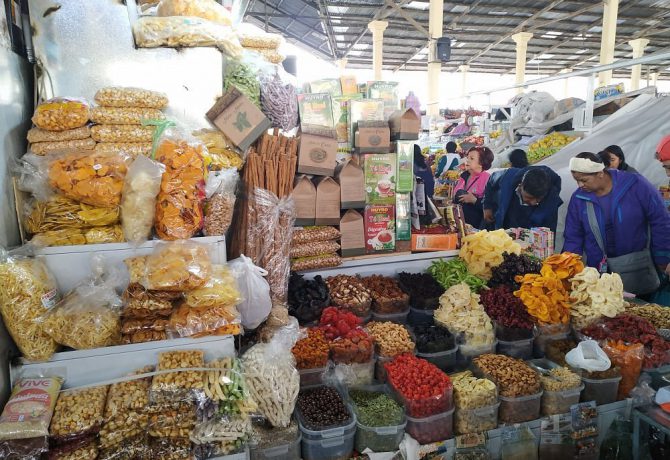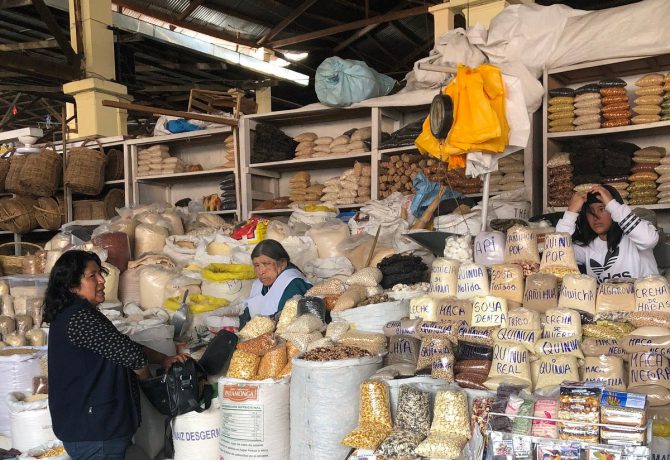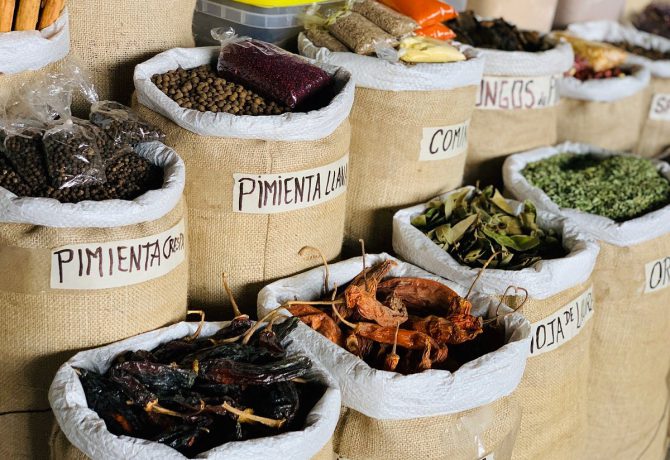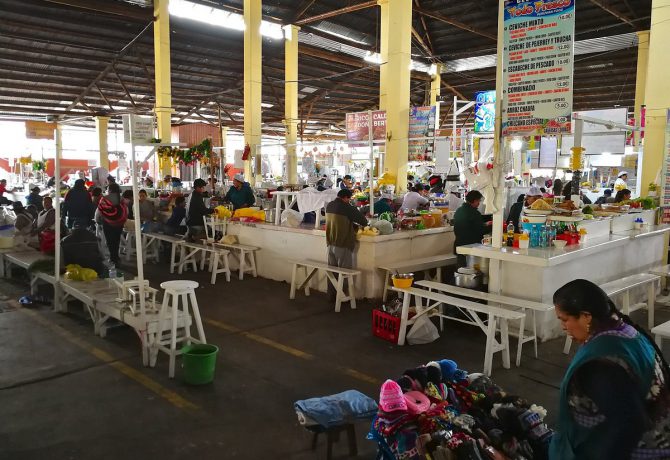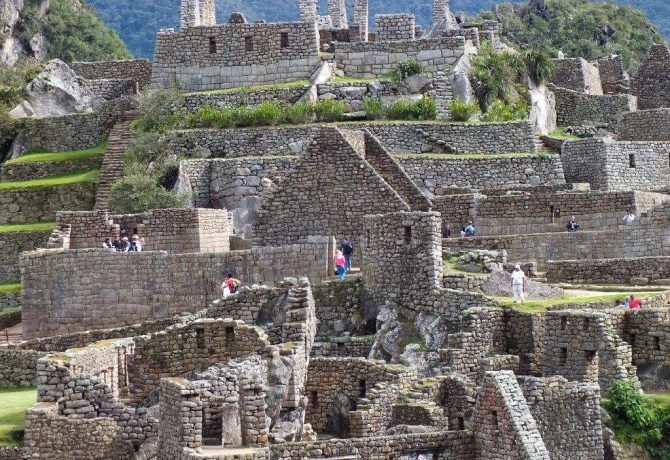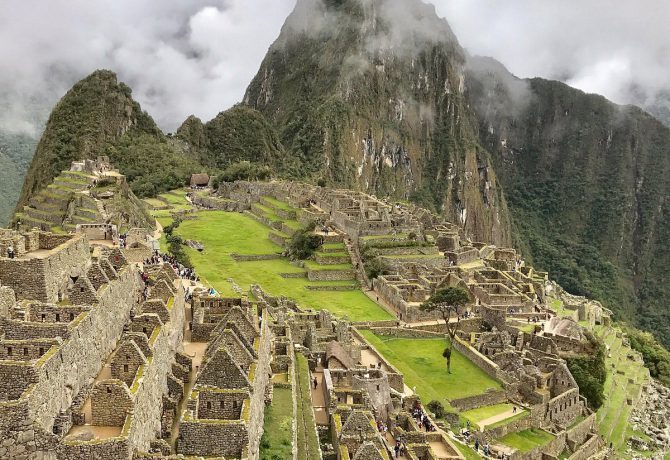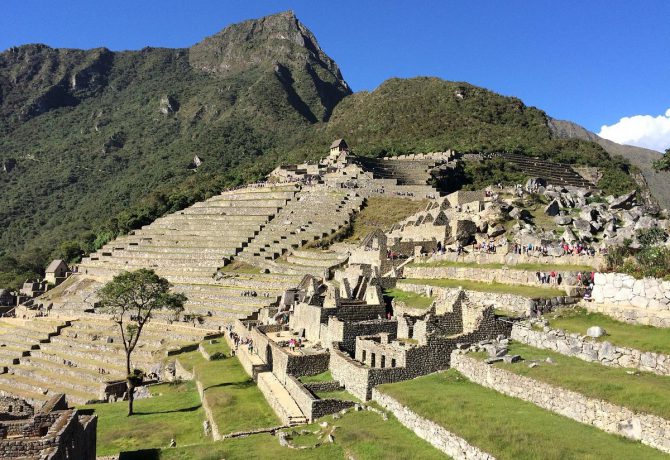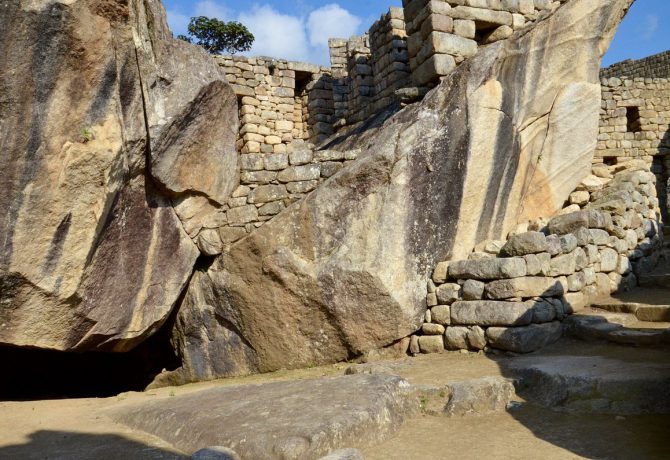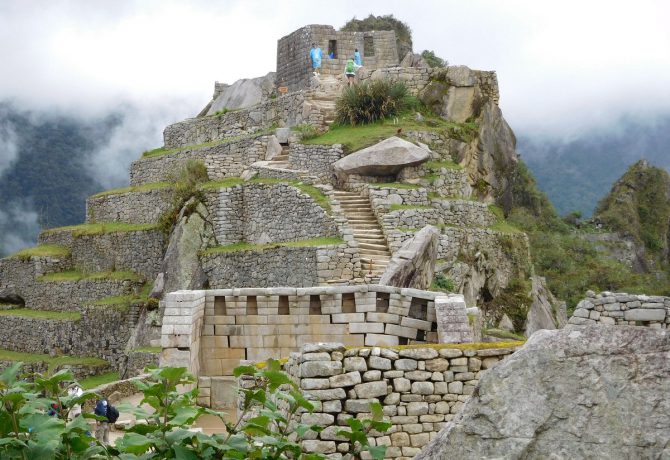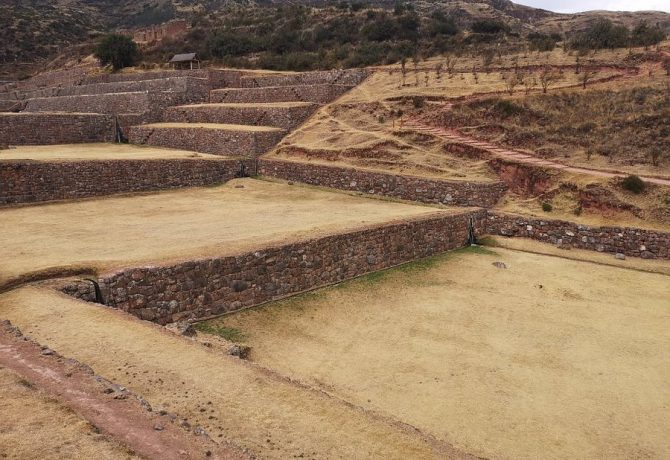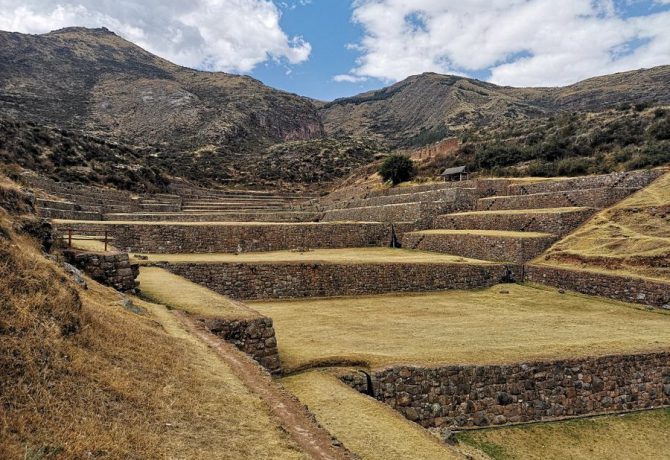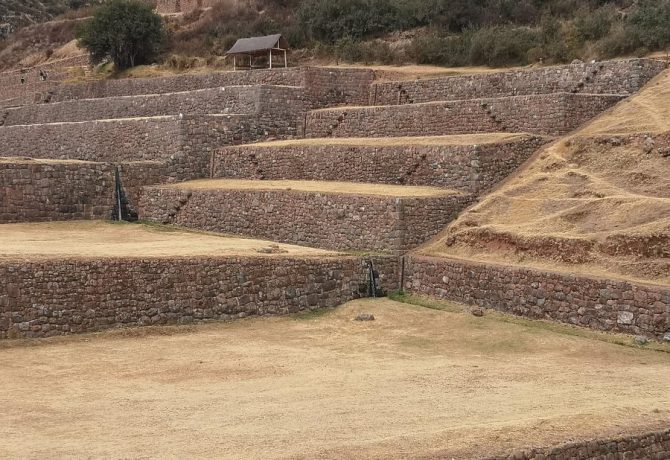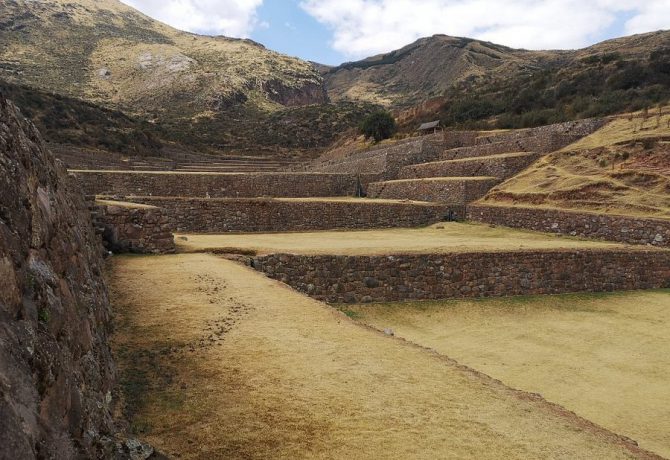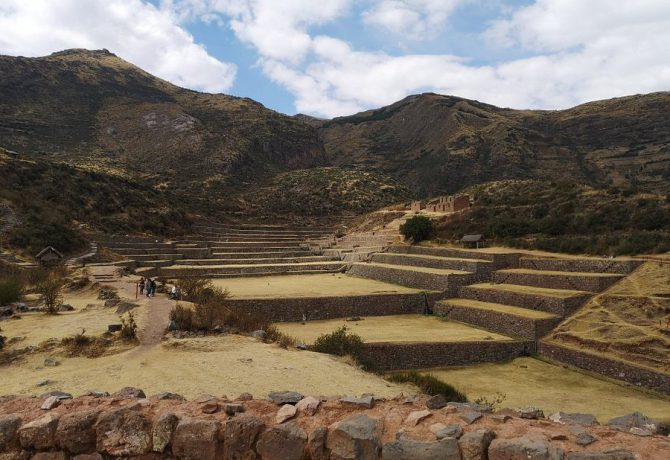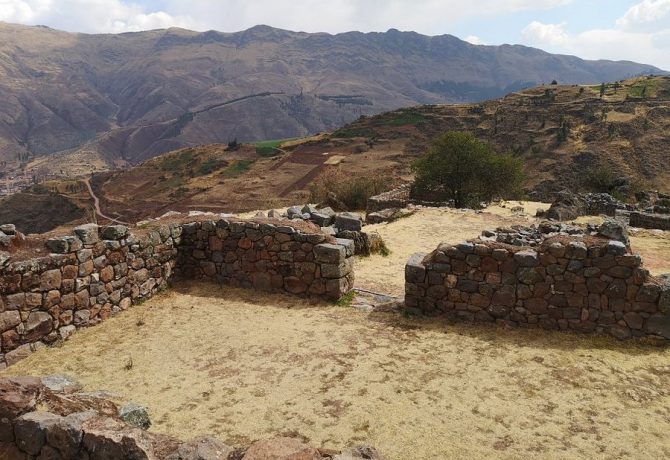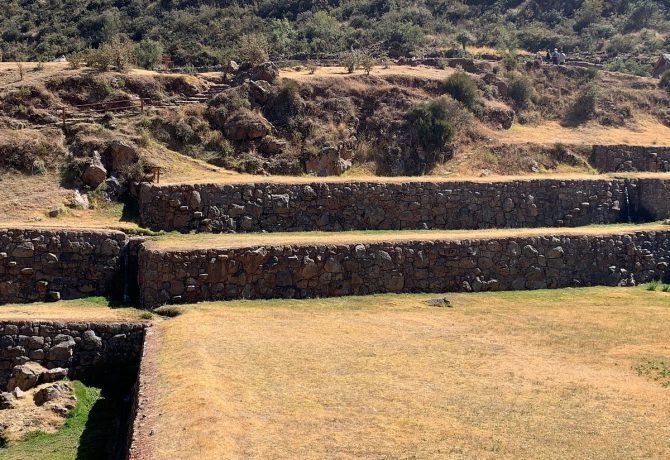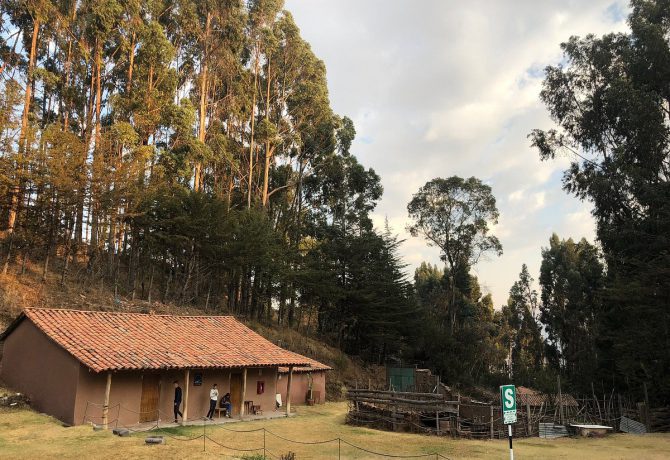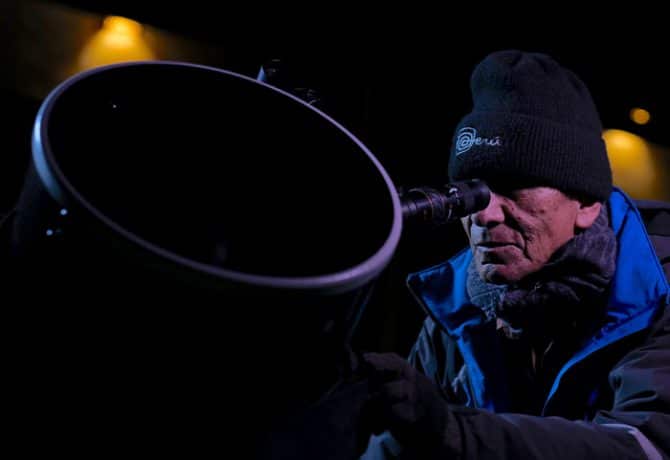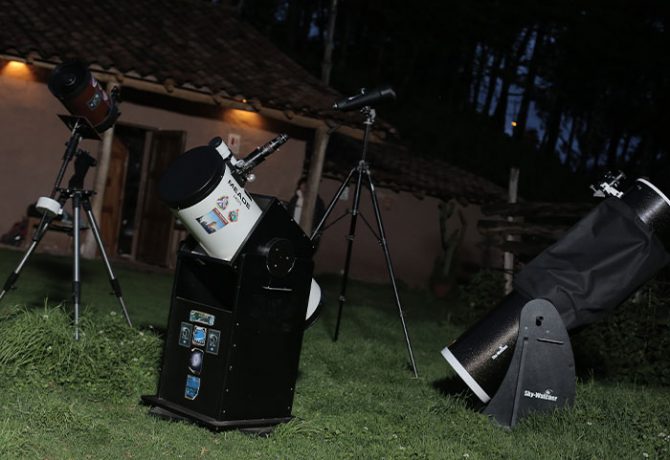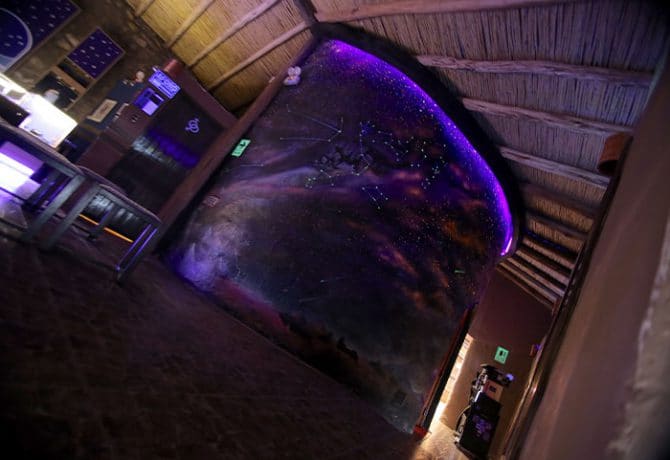Cusco is one of the most popular cities in South America among tourists. But the abundance of attractions in the ancient capital of the Incas often produces a stunning effect on history lovers and makes them nervous. And indeed, most likely everything will not work and you will have to set priorities.
- 1 Plaza de Armas
- 2 Cathedral of Santo Domingo
- 3 Church of La Compaña de Jesús
- 4 Coricancha and the Monastery of Santo Domingo
- 5 Sacsayhuaman
- 6 Statue of Christ “Cristo Blanco”
- 7 San Blas Quarter
- 8 Church of San Blas
- 9 Museum of Pre-Columbian Art
- 10 Bishop’s Palace
- 11 Duodenal Stone
- 12 San Pedro Market
- 13 Trip to Machu Picchu
- 14 Tipon
- 15 Planetarium of Cusco
- 16 Attractions Cusco on map
Plaza de Armas
It is best to start sightseeing from this square. It is located in the heart of the historic part of the city and from here it is easy to get to other interesting places. A short walk through the Plaza de Armas and a tour of the surrounding buildings will help you feel the soul of Cusco and feel the atmosphere of this unique city. In the center of the square you can see a monument to the fighter for the independence of Peru, Tupac Amar II.
Cathedral of Santo Domingo
Since the Cathedral of Santo Domingo was the first cathedral in Cusco, the locals say simply “Cathedral” when they mean it. The Spaniards began its construction in 1560 on the ruins of the Palace of Viracocha Inca, the ruler of Cusco in the XV century. An interesting facade of red granite blocks is admired by tourists, but when they learn that Cusco is located in a seismically active region and this architectural monument has survived many earthquakes, an undisguised reverence appears on their faces. The interior of the cathedral will also not leave anyone indifferent, there are outstanding examples of colonial art.
Church of La Compaña de Jesús
La Compaña de Jesús is called the most beautiful Baroque church in all of America. It is very close to the Cathedral of Santo Domingo and was built in order to compete with it. Initially, the Jesuits intended to surpass the beauty and splendor of the cathedral, but the church authorities forbade them to do so. In any case, the structure was an architectural success.
Coricancha and the Monastery of Santo Domingo
The monastery of Santo Domingo is built on the ruins of Coricanchi – the ancient Temple of the Sun, the most important shrine of the Incas. At one time, the walls of Coricanchi were covered with gold, and the courtyard was full of heavy gold statues. The temple was destroyed by the conquistadors, all precious metals were taken to Spain, and a Christian monastery was built in its place. But the pristine foundation of Coricanchi can still be seen today, with tourists amazed by its perfectly flat smooth granite blocks. They are made so qualitatively that they are more reminiscent of a product of modern industry than hand-processed stone, which is at least 900 years old.
Sacsayhuaman
Despite the fact that the Spaniards tried to destroy all traces of inca rule, Cusco is still full of architectural monuments of the pre-Columbian era. Sacsayhuaman is the ruins of an ancient fortress, which also had an important religious significance. Here you can once again be amazed at the ability of the Incas to work with stone. In June, during the winter solstice, the famous Inti Raymi festival takes place here, which attracts many tourists.
Statue of Christ “Cristo Blanco”
The huge eight-meter statue of Jesus Christ “Cristo Blanco” (literally – White Jesus) was donated to the city by Arab-Palestinian refugees who took refuge here during the Second World War. It is a 10-minute walk from Sacsayhuaman and even those tourists who are indifferent to the statue itself should climb to it. From the platform that surrounds it, a stunning panorama of the historic center of Cusco opens.
San Blas Quarter
The San Blas quarter consists of very steep cobbled slopes and is known for its artisans, there are many different workshops and souvenir shops. This point should not be missed by those who want to take home something as a memento of Cusco.
Church of San Blas
The church of San Blas is located on a small square in the quarter of the same name and despite the rather simple appearance, boasts an interesting interior. The most famous element of the church is an incredibly intricate carved pulpit in the Baroque style. It is believed that the carver worked on its creation for 40 years. But for those who see this work of art with their own eyes, such a duration of work will not seem surprising.
Museum of Pre-Columbian Art
Despite the unspoken status of the archaeological capital of South America, there are very few museums in Cusco – most of the exhibits found here are stored in the museums of Lima. The Museum of Pre-Columbian Art is perhaps the only museum worth visiting in Cusco, there are interesting works of art of the pre-Inca era and many works of gold from the time of the Inca Empire.
Bishop’s Palace
What the Spaniards really succeeded in was the conversion of the Quechua Indians to Catholicism. No wonder there are so many beautiful churches, temples and monasteries in Cusco. To once again see how much power the clergy enjoyed in earlier times, you can visit the Bishop’s Palace. This is an excellent example of colonial interior design, here everything speaks of the wealth and huge influence of its inhabitants.
Duodenal Stone
Like many buildings in Cusco, the Bishop’s Palace was built on the foundations of an ancient Inca structure. And in one of the walls of the palace there is a twelve-cornered stone, which has become a famous landmark of Cusco. This is another example of the incredible skill of the Incas in working with stone and their scrupulous approach to construction. In addition, the foundation walls are so massive that they give some idea of what the Inca palaces were like.
San Pedro Market
San Pedro is the main market of Cusco. It occupies a whole block and sellers from all over the region come here to sell their goods. Anything can be found in the market, but tourists are attracted mainly by the abundance of fruits, freshly squeezed juices and exotic food. And if most of the other attractions focus on history, then San Pedro helps to better understand the diversity of Peruvian culture today.
Trip to Machu Picchu
This attraction is hardly worth recommending at all. In most cases, it is the desire to visit Machu Picchu that causes tourists to visit Cusco. This is one of the New Seven Wonders of the World and it is so famous that it does not require a description at all. The only recommendation is that you need to allocate a separate day for visiting Machu Picchu and you should not combine it with a tour of Cusco.
Tipon
Tipon is another miracle created by the hands of the Incas for ritual purposes. These are terraced water gardens through which water descends from a mountain spring. The attraction is located 30 km from Cusco and you can get there by bus or taxi. The terraces are very well preserved and once again allow you to admire the engineering skills of the ancient civilization.
Planetarium of Cusco
The recommendation to visit the planetarium may seem strange among the list of unique historical sights, but do not rush to conclusions. Cusco is located at an altitude of 3400 m and the region produces very little light pollution. These are ideal conditions to observe the stars that other planetariums in the world cannot boast of.

